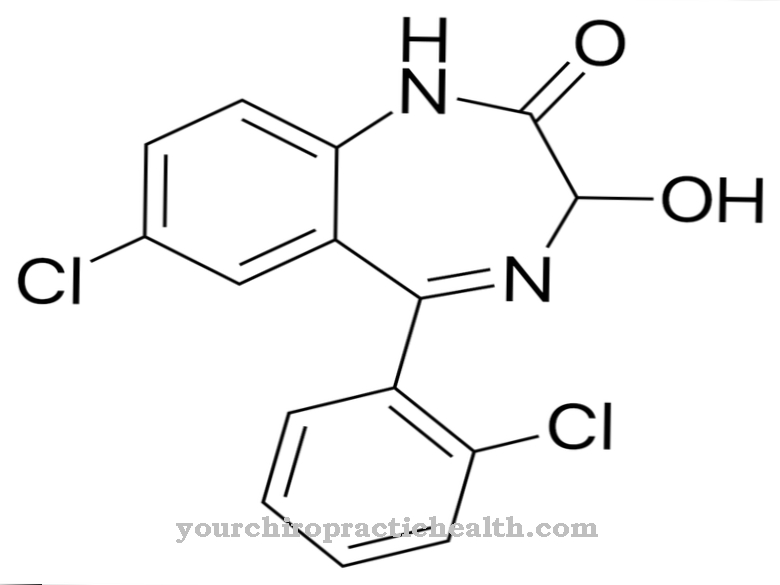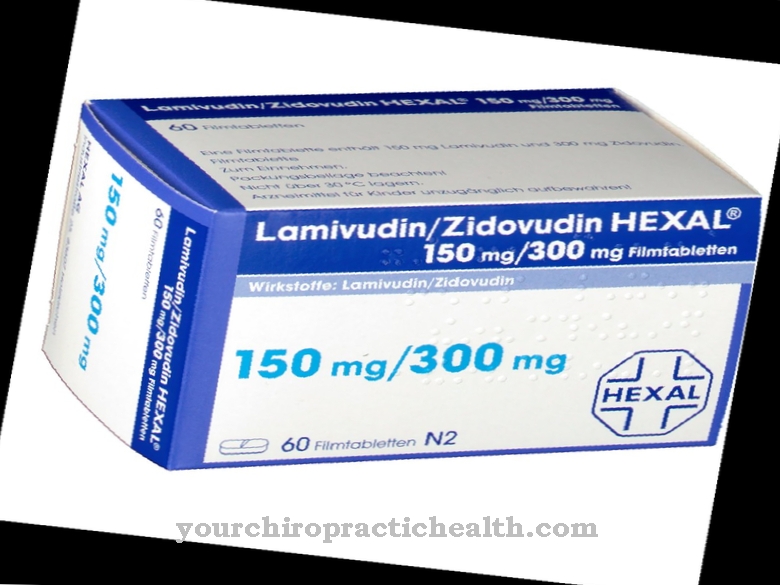At Thiethylperazine is a medicinal substance that belongs to the phenothiazines. Thiethylperazine is an antiemetic and is therefore suitable for the medicinal treatment of vomiting, nausea and attacks of dizziness. Thiethylperazine is also used as an antipsychotic. Thiethylperazine has an antagonistic effect on the receptors of the neurological messenger substance dopamine.
What is thiethylperazine?
Synonyms for the active ingredient thiethylperazine are Thiethylperazine dihydrogen maleate and Thiethylperazine. The active ingredient is currently no longer available on the pharmaceutical market in numerous countries, for example in Switzerland. Thiethylperazine is mainly used in the form of suppositories, dragees and injection solutions. It is available under the trade name Torecan® from Novartis.
Thiethylperazine is in the form of a crystalline powder at room temperature. The color of the substance ranges between pure white and a light yellow. The substance thiethylperazine hardly dissolves in water, but relatively easily in ethanol. When exposed to light, thiethylperazine shows a reddish color.
The drug thiethylperazine is an antiemetic and is therefore suitable for the treatment of nausea and vomiting as well as dizziness. The triggers of the symptoms play a subordinate role, as thiethylperazine alleviates the symptoms regardless of their cause.
In addition, the active ingredient can be used as an antipsychotic, since drugs from the phenothiazine category are well suited for treating psychotic symptoms. Doctors make use of the fact that thiethylperazine has an antagonistic effect on the dopamine receptors. Patients take the medicine one to three times a day in the form of dragees.
The most common undesirable side effects of thiethylperazine are drowsiness, a dry mouth, and drowsiness. Pharmaceutical manufacturers use the substance thiethylperazine maleate in the production of drugs.In the chemical structural formula, the substance has a piperazine side chain.
Pharmacological effect on the body and organs
Thiethylperazine acts as a typical antiemetic on the human organism. Thiethylperazine also has an antipsychotic effect. The mechanisms of action of thiethylperazine arise from the antagonism that the substance exerts on the receptors of the messenger substance dopamine. Thiethylperazine also influences the receptors of other neurological transmitters. The half-life of the drug thiethylperazine is around twelve hours after ingestion.
Basically, the drug thiethylperazine intensifies the effects of various other substances, which must be taken into account before taking it. For example, thiethylperazine increases the effect of beta blockers, sleep-promoting drugs, alcohol and antihypertensive drugs.
The frequency of taking thiethylperazine depends mainly on the dosage form and the age of the patient. Adults usually receive the drug thiethylperazine in a dose of ten milligrams and take one to three dragees a day.
Rectal administration of thiethylperazine in suppository form is also possible. The duration of treatment is based on the respective health condition of the patient and is on average between two and four weeks for thiethylperazine.
Medical application & use for treatment & prevention
Thiethylperazine is used both as an antiemetic and an antipsychotic. Doctors prescribe the active ingredient thiethylperazine in the form of suppositories or dragees, depending on the symptoms and underlying disease. It is also possible to administer the drug by injection. Currently, however, thiethylperazine has largely disappeared from the market, which is mainly due to the low demand.
As an antiemetic, thiethylperazine is particularly suitable for relieving vomiting and nausea after chemotherapy and radiation therapy for malignant neoplasms. Thiethylperazine is also used after operations. Treatment usually lasts two to four weeks. In principle, the accompanying technical information must be observed when dosing and taking the active ingredient.
You can find your medication here
➔ Medicines against vomiting and nauseaRisks & side effects
Before and during the intake of drugs with thiethylperazine, the potential side effects as well as interactions and contraindications must be considered. Possible undesirable side effects include dizziness, headache, tachycardia and seizures. In addition, after taking thiethylperazine, the patients sometimes suffer from increased photosensitivity, extrapyramidal abnormalities, peripheral edema and dry mouth. Many people also report an increased need for sleep during therapy with thiethylperazine.
In some cases, orthostatic hypotension, kidney and liver problems, and cholestatic hepatitis also develop. Some people experience allergies or develop agranulocytosis after taking thiethylperazine. In rare cases, the administration of thiethylperazine gives patients the neuroleptic malignant syndrome.
To avoid complications, there are various contraindications that temporarily contraindicate the administration of thiethylperazine. For example, hypersensitivity to thiethylperazine speaks against taking the drug in principle. Problems with the kidneys and liver, depression of the central nervous system and diseases of the heart also speak against the administration of thiethylperazine. In addition, therapy with thiethylperazine is not possible in the case of an enlarged prostate or Parkinson's disease, since otherwise there is a risk of serious complications.
The use of the drug during pregnancy is also generally excluded. In addition, thiethylperazine is not suitable for breastfeeding women and children under 15 years of age. There are interactions mainly with drugs that have a central dampening effect.



























